When I compare decklists from other players to decks that I build, I notice a handful of cards that show up a lot in other decks that I never really want to play myself. Seeing these cards in so many decklists, it can be easy to think they’re “auto-includes” or that you should be playing them too.
I can’t prove you should never play these cards, but if you’ve thought about cutting any of them but figured it had to be wrong because they’re played so much, I’d like to encourage you to try getting away from them.
Bad Tutors
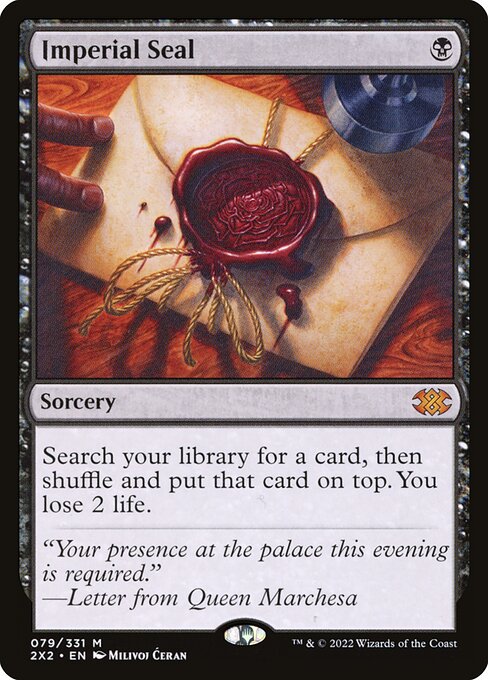
First, the biggest offender, bad tutors.
When you’re playing a 99 card singleton deck, a card that lets you find whatever card you want is extremely powerful. You’ll often want to build your deck around having a few different cards and you can’t realistically expect to see those cards consistently without a way to search for them directly. But just how many tutors do you need, and how much should you be willing to pay?
An important consideration here is that once you’ve found your key card, you can’t find it again, so tutors often have diminishing returns. Also, I find that decks are often looking to assemble one of a number of two card combos, and I’d much prefer to draw half of one and tutor for the other half than to tutor for both halves. The more different combos you play, the more likely you are to find half of one of them, and if you have several different combos, you’re more likely to be able to find another win when something’s disrupted than if you just have a lot of ways to find two or three specific cards.
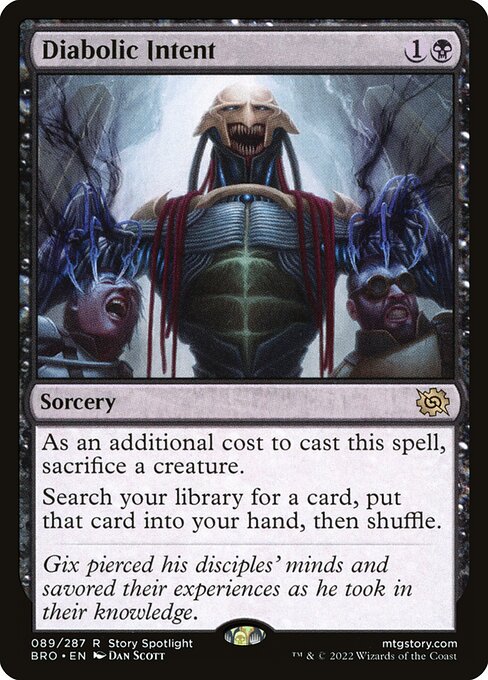
So I’m happy to play Vampiric Tutor, Demonic Tutor, and maybe even Diabolic Intent if I’m going to be good at having creatures to sacrifice, but even that one’s a stretch most of the time. Realistically, a creature’s usually going to be worth at least a mana, and at that point Diabolic Intent is functionally costing three mana, which I think is just more than a tutor’s worth.
Imperial Seal is another card that sees a lot of play that I just can’t get behind. Needing to predict what you’ll want next turn and going down a card is too bad. I often see people defend the card by saying that if they play it with something like a commander that draws a card they can get the card right away, but even when they can do that, they still have to set that play up and make it at sorcery speed. I think people don’t properly appreciate how many cards it takes to win a cEDH game–you might have a two card combo that wins a game, but realistically, you’re going to have to defend those cards if you want it to happen, and you can afford to go down a bunch of cards and mana setting up your combo and still expect to resolve it.
You definitely need to play enough ways to find your important cards that you’ll be able to find them, but once your deck has a few tutors, regular card drawing can be counted on to find one of them at some point, and the regular card drawing will also help you play a game–stop other players from winning to set up your moment and then have the tools to push it through when you try to win, so don’t go overboard on tutors, you just need a few and then try to expand into more robust engines.
Tutors I usually don’t play that see a lot of play: Wishclaw Talisman, Grim Tutor, Mystical Tutor, Worldly Tutor, Diabolic Intent, Imperial Seal
Tutors I usually do play: Demonic Tutor, Vampiric Tutor, Enlightened Tutor, Finale of Devastation, Invasion of Ikoria, Chord of Calling, Transmute Artifact
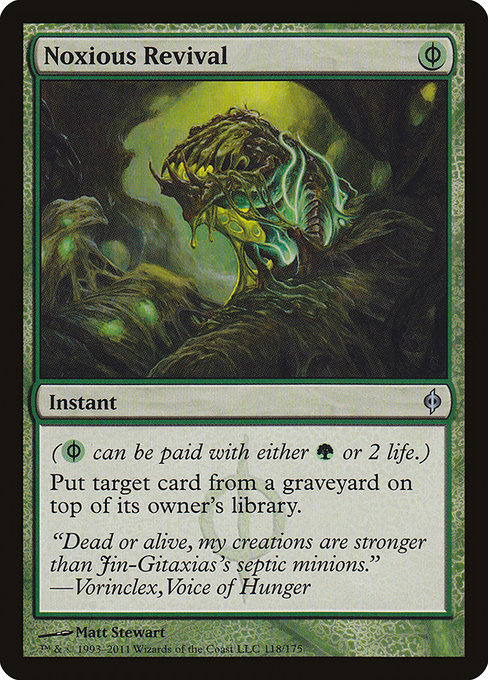
Another card that shows up a lot that I don’t tend to play is Noxious Revival. This one’s interesting because I like that it can interact for free if an opponent is trying to reanimate something, and I like that it’s a free Vampiric Tutor if the card you want is in your graveyard, at which point it does something Vampiric Tutor can’t do, but I think as interaction goes it’s pretty narrow and it’s very weak early in the game. I think the fact that it’s bad early somewhat diminishes the value you get from being able to play it for free, since your mana’s most constrained in the early game.
I like playing with cards that let me use cards in my graveyard, but I think Colossal Skyturtle is a much better card if you can play blue cards. Most of the reason I like Colossal Skyturtle is kind of unrelated to the functionality of Noxious Revival–I really like channel cards because I think interacting with Grand Abolisher or through Silence is really important. Noxious Revival and Skyturtle usually serve very different roles, but if your goal is to have a way to get a card back from your graveyard, I prefer the total package offered by Skyturtle to that offered by Noxious Revival
March of Swirling Mists
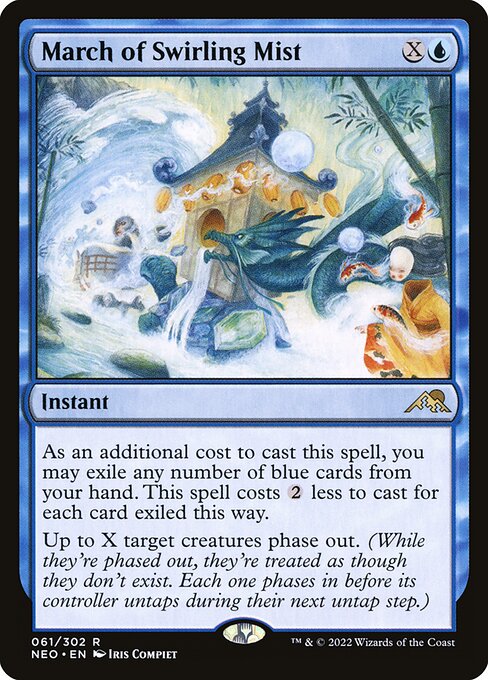
March of Swirling Mists is another big one that shows up a lot. In theory, this card can free you from a large number of stax pieces just long enough to do whatever you’re trying to do, and if that doesn’t win the game, then the stax pieces will still be around later to potentially interfere with your opponents, and it also has the ability to save your own creatures. In practice, I feel like I usually see this card used in the most unimpressive ways. I don’t know if the people I play with are just too willing to use it in low value situations, but I feel like there’s a lot of wishful thinking and people overvaluing cool plays that goes into choosing this as the interactive spell of choice.
That said, I was a late adopter of Dress Down and I’ve been pretty impressed with that, so it’s possible that I’m still underestimating March of Swirling Mists
Peer into the Abyss
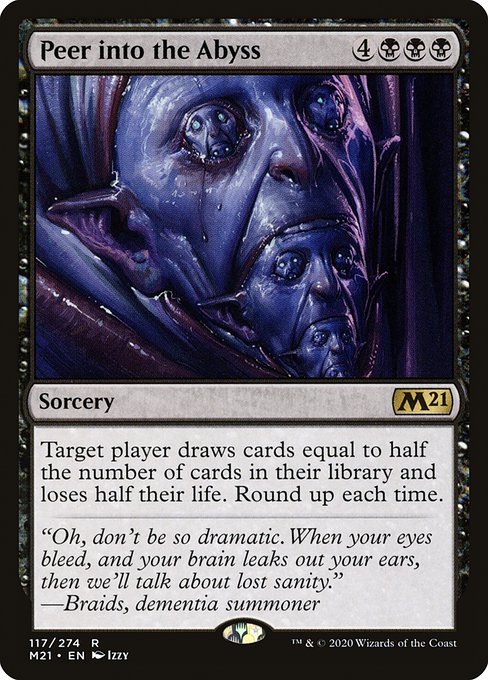
“All you have to do is resolve this seven mana sorcery and you’ll probably win” Let’s not even get into the horrible situations that involve an opposing Deflecting Swat or Orcish Bowmasters. My guiding principle is that I don’t want dead cards in my hand. I want my draws to be smooth, which means I want cards that I can play proactively to advance my game or I want cheap reactive cards. I never want cards clogging my hand that I can’t use. With Peer Into The Abyss I need to have seven mana and the ability to defend it after spending seven mana, and that’s going to happen way less often than spots where I’ll draw it when I can’t do anything with it.
Dark Ritual
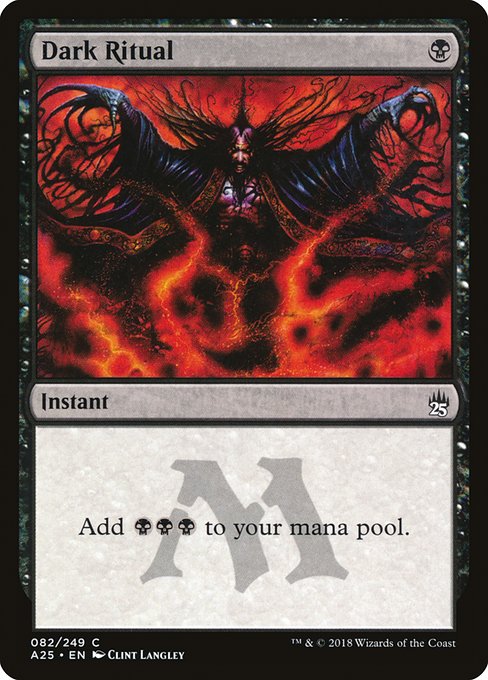
cEDH is about winning at the right time, not winning as soon as possible. If you build your deck to try to win before anyone else, someone will usually have free interaction to stop you. The reason to play rituals is so that you can try to win at the right moment if the moment happens to present itself early, but if you’re truly waiting until the right moment and not going for a win as soon as possible, most of the time Dark Ritual will play like part of a multi-card win combo that you can’t do anything with until you’re trying to win, meaning it can’t be deployed proactively and it can’t react, which makes it the kind of card I don’t want in my deck.
Wheel of Fortune & Timetwister

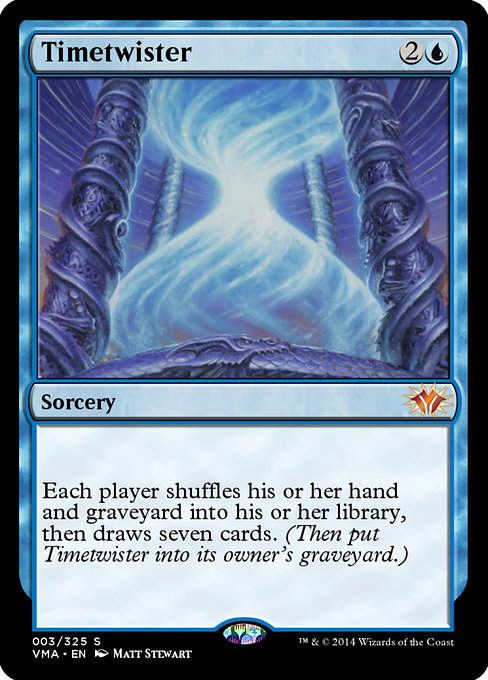
These cards are super fun and they’re a good way to catch up when you’re behind, but the more I play the more I realize these just don’t make any sense given my play style. These are good if you use cards recklessly and tend to have fewer cards than your opponents, but I always use my cards very conservatively, try not to present threats that others will feel the need to answer, and try not to have to answer things someone else might answer or that I can possibly ignore. Since I’m so likely to have a carefully sculpted hand I’m very unlikely to want to cast one of these, so they’ll usually fall into the same trap, taking up space on a card that I can’t proactively advance my game with and can’t use as an answer as needed.
Forbidden Orchard

This card can actually do some cool things, like giving an opponent a creature to block an unsuspecting Ragavan, but overall I just don’t think it’s hard enough to find the right colors of mana to justify this. It’s not that I think it’s horrible or that no one should ever play it, I just never feel like it’s the best way to get enough sources of the colors of mana I need.
Ad Nauseam
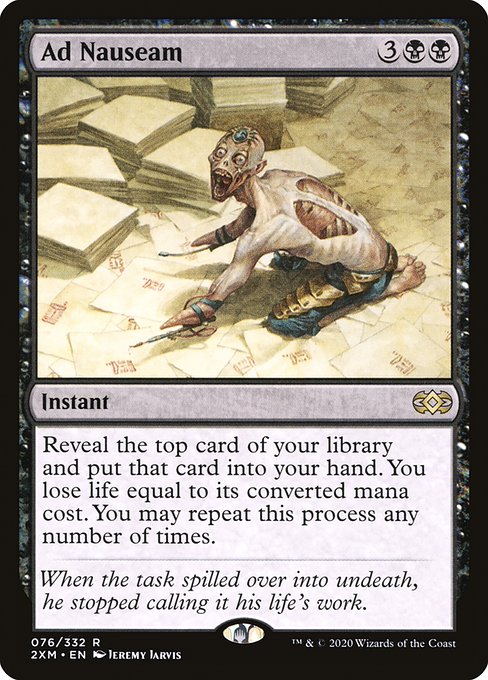
Finally, I’ll end with the most controversial, which is Ad Nauseam. Ad Nauseam is extremely powerful given how much life you have to work with and that it’s an instant. My concerns are first, that I think the deckbuilding cost is very high–cheap spells are great in cEDH, so having a low curve is good, but there are some cases where Ad Nauseam actually pushes you to play fewer free cards because cards like Mindbreak Trap, Subtlety, and Deadly Rollick, very strong free spells have a mana value of four, which is pretty high for Ad Nauseam. More importantly, Ad Nauseam has the same problem as most cards I don’t like, which is that it costs a lot of mana and requires very careful timing, so too often it involves holding a card in your hand that you can’t productively cast.
Most cards here are cards I never really find a purpose for, and with Ad Nauseam, I certainly think it has its uses, but I think it’s widely seen as a card every black deck should play, and I certainly haven’t liked it that much.
Another hidden issue with Ad Nauseam is that players will typically attack the player they see as most likely to spend their life for cards, which usually means attacking a player with Ad Nauseam in their deck. While some players might not believe you’re not playing Ad Nauseam if you tell them you’re not and you’re playing black, if you cycle a Troll of Khazad-dûm it becomes pretty clear you’re not playing Ad Nauseam, so it can be nice to build your deck in an obviously non-Ad Nauseam friendly way to help divert attacks away from you and possible toward another player who is playing it.
As always, I think the most important part of cEDH deckbuilding is choosing cards that allow you to play the kind of game you’re trying to play. These cards don’t fit my playstyle and I think they’re somewhat overplayed in general, but that doesn’t mean everyone who plays any of them is wrong for doing so. To be potentially overrated in cEDH, a card has to be very good to begin with or no one would play it in the first place.
Sam Black (any) is a former professional Magic player, longtime Magic writer, host of the Drafting Archetypes podcast, and Twitch streamer. Sam is also a Commander Cube enthusiast, and you can find Sam’s cube list here. For anything else, find Sam on Twitter: @SamuelHBlack.

